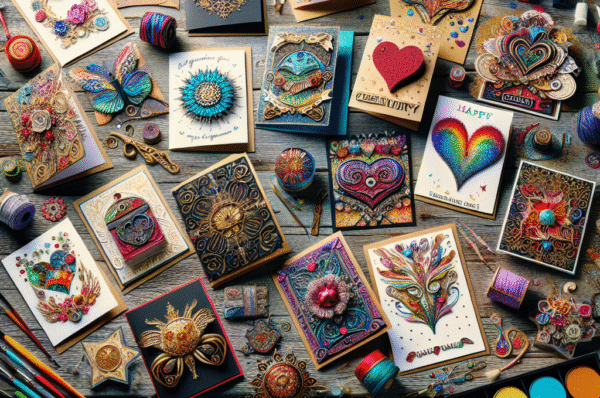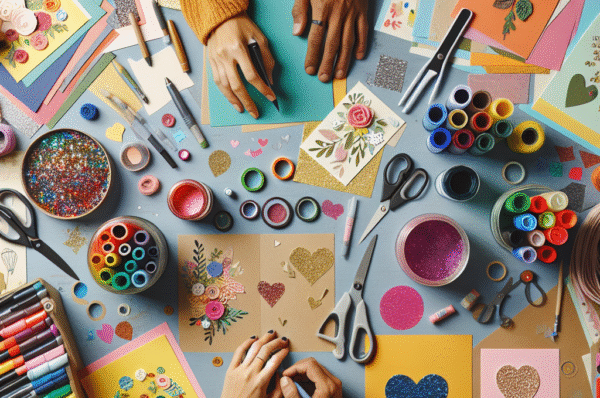In a world driven by digital communication, the allure of a beautifully crafted card can’t be overstated. Whether it’s a birthday greeting, a wedding invitation, or a heartfelt thank-you note, custom card design opens a world of creativity and personalization. This ultimate guide will inspire you to unlock your creativity and design cards that leave a lasting impression.
1. Understanding Your Audience
Before diving into design, it’s essential to understand the recipient. Ask yourself:
- Who is the card for? Consider their age, interests, and preferences.
- What is the occasion? Tailoring your design to the event can make it more meaningful.
- What emotions do you want to convey? Joy, love, nostalgia, or encouragement?
Knowing your audience will guide your design choices and help ensure your card resonates emotionally.
2. Selecting the Right Materials
The tactile aspect of a card holds great importance. Here are some materials to consider:
- Paper Type: Options ranges from glossy to uncoated, textured to smooth. Heavier card stock can convey elegance, while recycled materials can highlight sustainability.
- Finishes: Think about using matte, gloss, or even metallic finishes to make your design pop.
- Add-ons: Consider embellishments like ribbons, sequins, or foil stamping to include an extra layer of creativity.
3. Designing the Layout
A. Choosing Dimensions
Traditional sizes (like 5×7 inches) are always an option, but don’t shy away from unique shapes like square or even custom cuts. Think about:
- Standard vs. Unique Sizes: Unique dimensions can stand out, but make sure they still fit into standard envelopes.
- Portrait vs. Landscape Orientation: The orientation can change the overall feel of the card.
B. Creating a Focal Point
Your card should have a focal point to draw attention. This could be:
- An Image: A stunning photo or illustration that reflects the theme of the card.
- Text: A bold headline that captivates the reader’s attention.
- A Combination: A well-integrated blend of text and imagery can be particularly striking.
C. Balancing Elements
Make sure to maintain a balance between text, images, and white space. Too much clutter can overwhelm the viewer. Use grids and guidelines in design software to help keep elements aligned and balanced.
4. Typography Matters
The font you choose plays a vital role in your card’s overall aesthetic. Consider these tips:
- Legibility is Key: Ensure any text is easy to read, especially for important messages.
- Mixing Fonts: Try pairing a decorative font with a simple one for contrast, but limit yourself to two or three font styles to keep it cohesive.
5. Color Theory
Color can evoke emotions and set the mood of your card. Here are some insights:
- Color Schemes: Use a monochromatic palette for elegance, analogous colors for harmony, or complementary colors for vibrancy.
- Meaning of Colors: Different colors have different connotations; for example, red symbolizes love, blue represents calm, and yellow conveys happiness.
6. Personalization Techniques
Adding a personal touch can elevate your card design. Consider these options:
- Handwritten Notes: Something as simple as a handwritten message can make a card feel special.
- Photos: Personal photos can heighten emotional connection. Consider using a fun collage or a single image that encapsulates a memory.
- Custom Illustrations: Drawing or commissioning artwork that reflects the recipient can make the card one-of-a-kind.
7. Software and Tools for Design
While traditional methods are wonderful, digital tools provide endless possibilities:
- Design Software: Programs like Adobe Illustrator, Canva, and Affinity Designer offer templates and customization tools suitable for all skill levels.
- Printing Services: Research local or online printing services that specialize in custom cards to ensure your design is printed with high quality.
8. Finalizing Your Design
Once your design is complete, take the following steps:
- Review: Check for typos, alignment issues, and color accuracy.
- Print Mock-ups: If possible, print a mock-up to see how your design translates from digital to physical.
- Gather Feedback: Before final production, seek input from friends or family to gather honest opinions and suggestions.
9. The Art of Sending the Card
The act of sending a card can amplify its impact:
- Timeliness: Be mindful of sending your card in a timely manner, particularly for occasions like birthdays or holidays.
- Choosing a Delivery Method: Consider hand-delivering for extra personal touch, or invest in quality envelopes for mailing.
Conclusion
Custom card design is more than just creating a piece of paper; it’s about crafting an experience and communicating a sentiment. With this guide, you’re equipped to unlock your inner creativity and design cards that speak to the heart, connect with your audience, and capture moments worth cherishing. So gather your materials, set your imagination free, and let your creativity flow!




